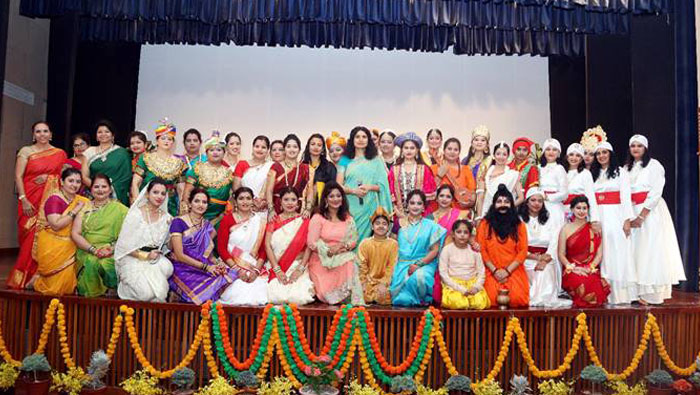
Muscat: As a part of its year-long celebration of 70 years of the Independence of India, the Indian Embassy, Muscat, organised a Cultural Show, ‘Glimpses of Indian Women Through the Ages’, at the Embassy premises on May 13.
There was a divergence in perception of the status of Indian women among the people in Oman, including among the expatriate communities, which was based on stereotypical presentations of Indian women in the media and lack of information about the revolutionary changes in the status of Indian women that had taken place since independence, the Embassy said in statement.
The Embassy, therefore, took the initiative of presenting a balanced, nuanced and accurate picture of the status of Indian women, as evolved over 5,000 years of India’s history.
The status of women in India had continued to evolve through the Ages and this was the theme of the event. It traced the evolution in the status of women from the Indus Valley Civilisation through the Vedic and Post-Vedic periods, the medieval period, and British colonial rule to the post-Independence era.
While women enjoyed, during the ancient age in India, a high status in society and participated in all spheres of activities, on par with men, there was a gradual decline in their status and role, and during the medieval period the role of women was increasingly restricted.
The well-known classical play, Abhigyan Shakuntalam, written by the famous poet Kalidasa, was enacted to depict the status of women during the Vedic period, when they wrote religious hymns, participated in philosophical debates, chose their husbands and engaged in other social, economic and religious activities, on par with men.
With gradual social awakening and reforms, advocated by religious and social reform movements, which began in the 18th and 19th centuries in India, the status of women in India began to change. In the post-Independence period, supported by constitutional, political, legal and economic measures adopted by the Government, aimed at guaranteeing equal status and opportunities for women, there had been revolutionary changes in the status of women in India.
Today, women in India enjoy status equal to men in every aspect and they have been as successful as men as soldiers, sportspersons, scientists, professionals and businesspersons, though there are aberrations and exceptions.
The event was attended by 120 prominent Omani women and women from diplomatic corps and Indian and other expatriate communities. The Cultural Show was organised by Sushma Pandey, wife of the Ambassador of India, in collaboration with a number of accomplished women from the Indian community, led by Madhulika Gupta and Seema Choudhery, who worked imaginatively and tirelessly to present the mesmerising show, the Embassy said.
The Embassy has been organising a series of cultural, economic and community events since August 2017 as part of the celebration of 70 years of India’s Independence. These include dance and music performances, essay and quiz competitions, exhibition of paintings, seminars and workshops with a view to highlight the journey of India as a nation since Independence in 1947.
Indians have also resolved to build by August 2022, when India will celebrate 75 years of Independence and freedom, a New India, which will be clean and free of corruption, poverty, terrorism, communalism, and casteism.
The Embassy quoted Pandey as saying that in India, with a large population of 1.3 billion, it was natural that there were divergences in the status of women from family to family, region to region and one strata of the society to other.
This is true as much now as it was during the ancient and medieval periods. Even during the medieval period, countless women played leading roles in battlefields, governance, politics, and social and economic activities.
This was highlighted through presentations on lives and achievements of a few accomplished women such as Razia Sultan, Ahilya Bai Holkar, Rani Rudrama Devi, Mira Bai, Joymoti and Rani Laxmi Bai, who carved a name for themselves in Indian history. These presentations were accompanied by music and dance from the regions to which they belonged.
Pandey underlined the fact that the Indian Government had taken a number of steps to ensure that women enjoyed a status equal to men and there was no discrimination on the ground of gender.
She spoke in particular about the Government’s flagship Scheme, “Beti Padhao, Beti Bachao” “Educate your daughter, protect your daughter”, stressing that empowering a girl not only empowered a family and the society at large but also the nation and the world. She noted that the equal status of women today in India was self-evident in the fact that both the Foreign Minister and the Defence Minister were women.
She stressed that India had, since Independence, experienced revolutionary changes in social, religious, cultural, political and economic spheres and Indian society had overwhelmingly accepted and assimilated these changes though, as natural, there ware pockets of resistance; they were exceptions, not the norm.